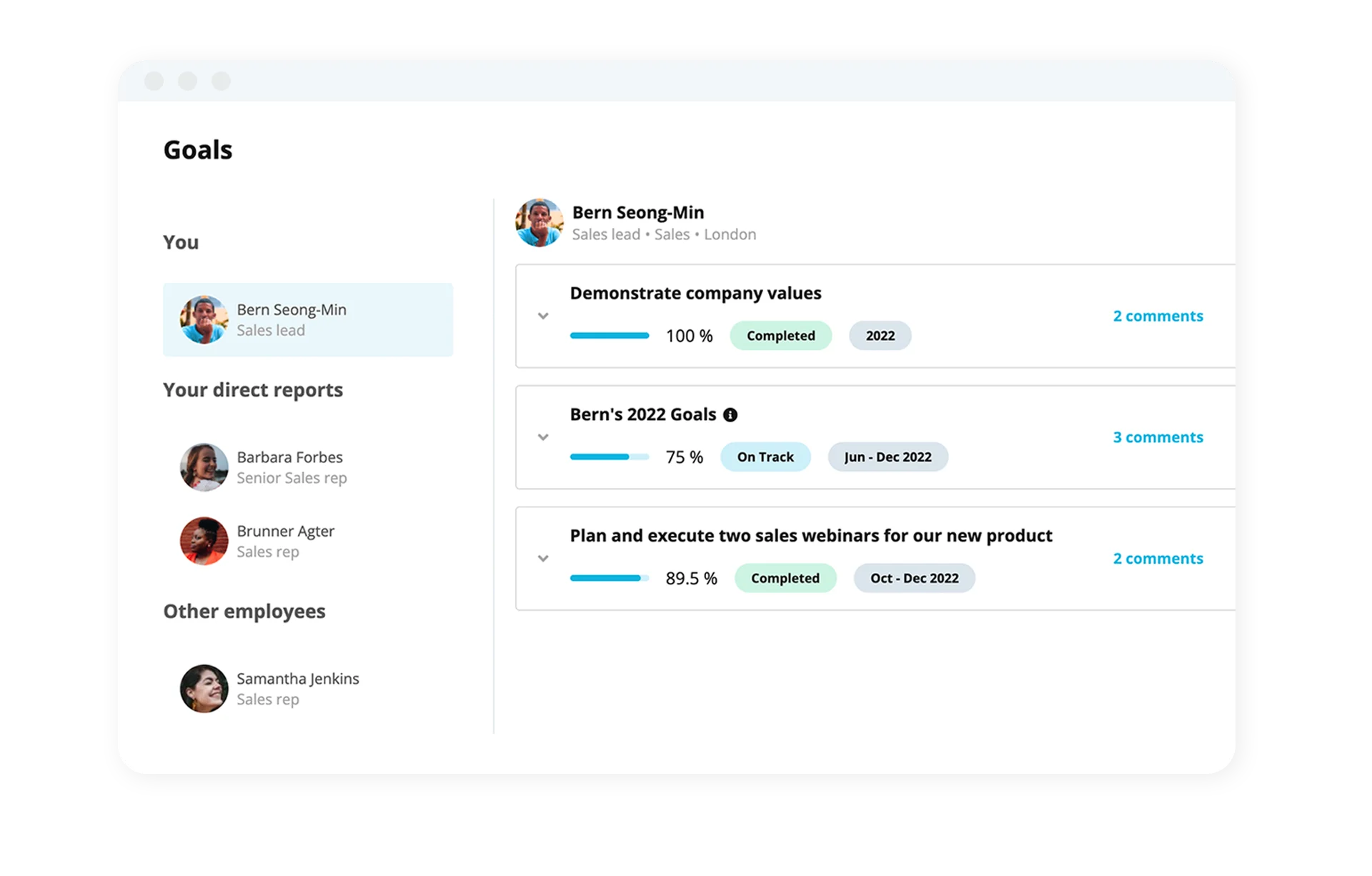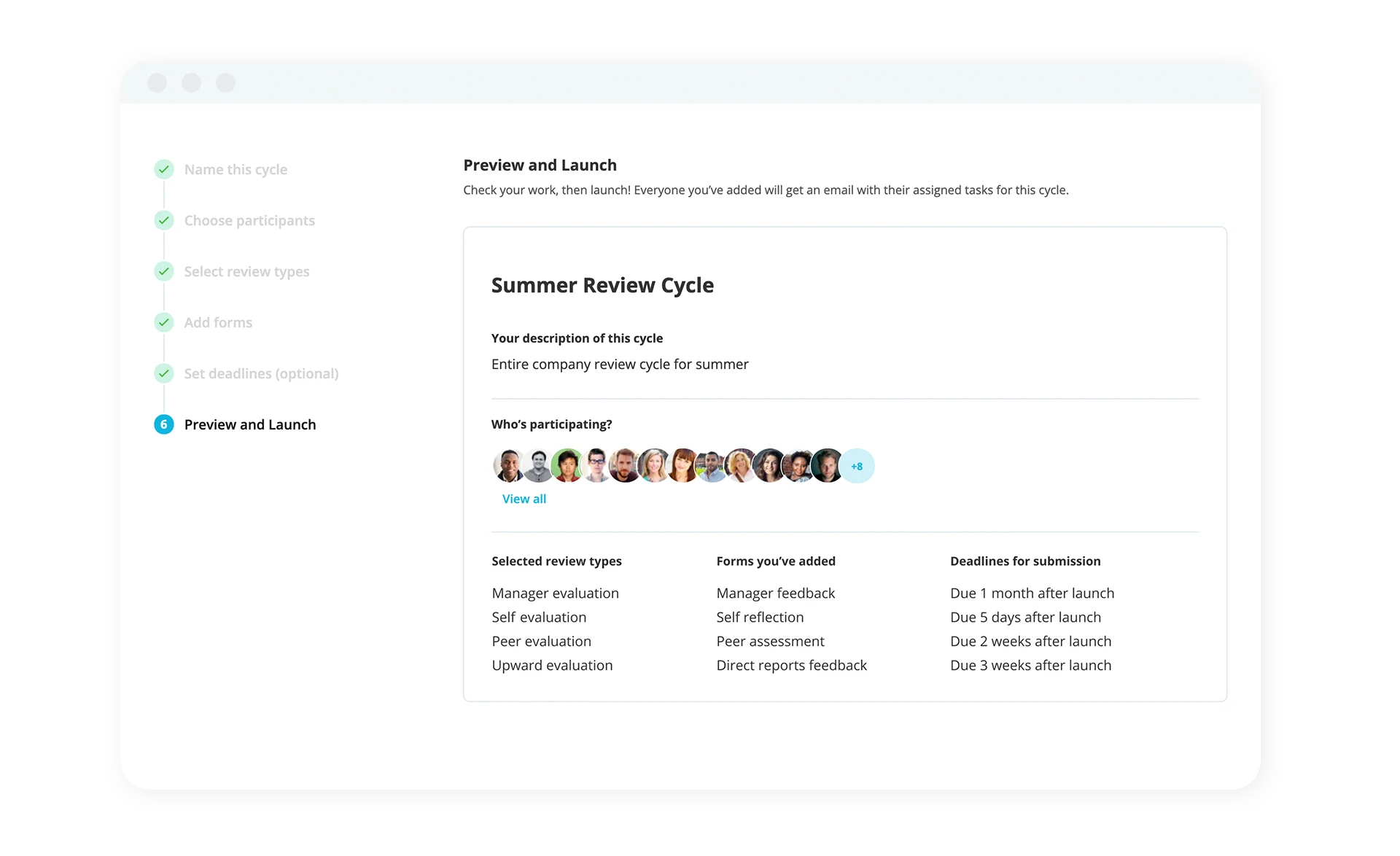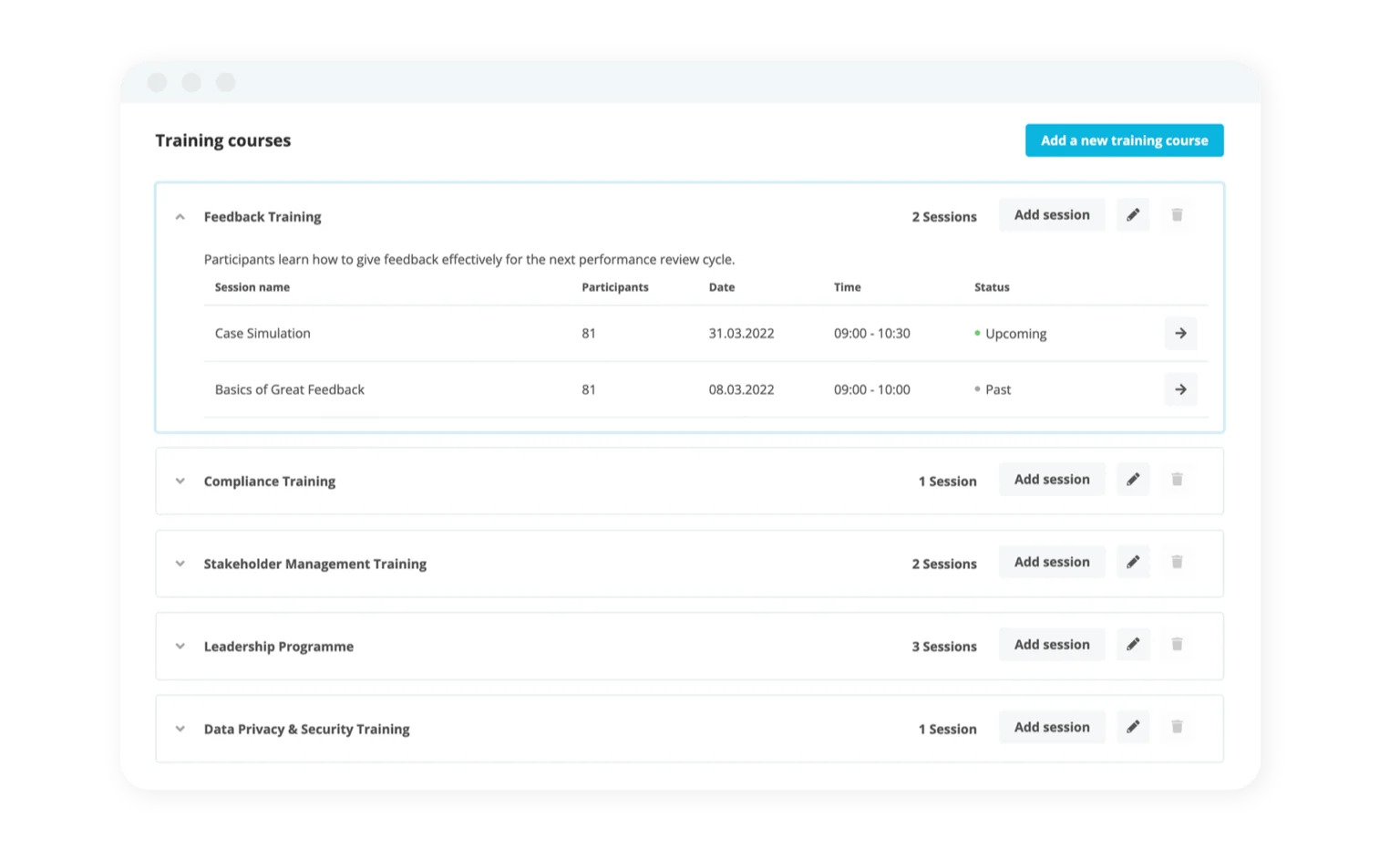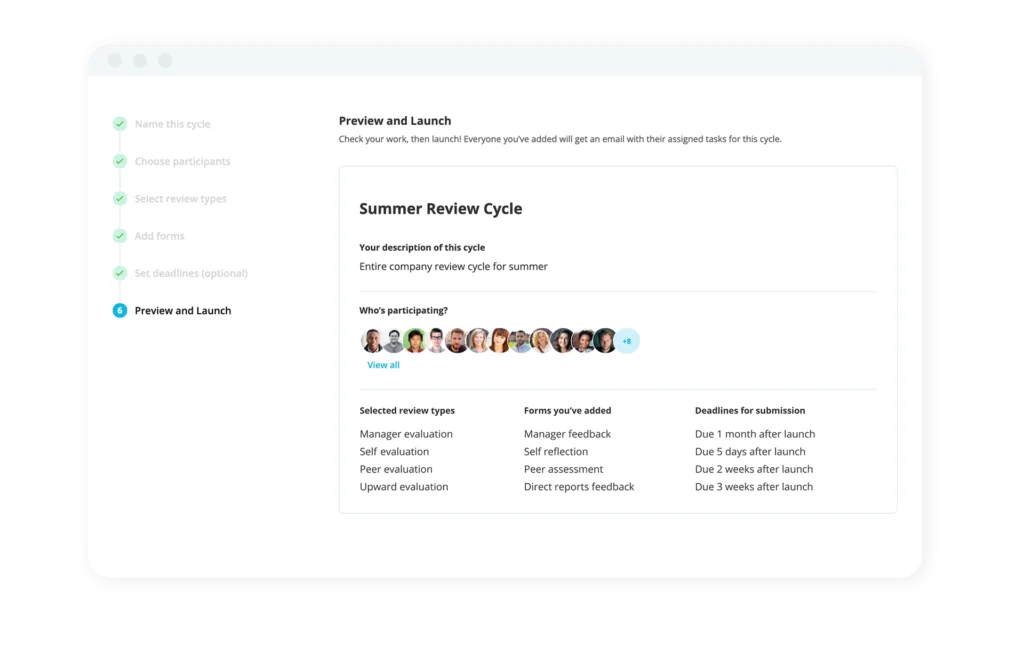
Performance review template
Download our template for better performance reviews today.
Grab your copy now10 Performance appraisal objectives and how to achieve them

Ask any organisation, and you’ll quickly learn about the pivotal role of performance appraisal objectives. After all, a strategy around appraisals should form the basis of any HR or people strategy – and should be done by focusing on what it is you want to achieve.
In this article, we’ll talk you through some of the most impactful performance appraisal objectives and how you can achieve them through your performance management processes.
Focus on the foundational elements of HRD with our performance management guide.Contents
- 1What are performance appraisal objectives?
- 2Improving productivity
- 3Setting employee goals
- 4Outlining promotion opportunities
- 5Tracking employee progress
- 6Identifying training needs
- 7Boost employee engagement and satisfaction
- 8Encourage employee development
- 9Maintain clean data
- 10Determine staffing requirements
- 11Encourage a culture of feedback
- 12Turn performance appraisal objectives into achievements with Personio
What are performance appraisal objectives?
A performance appraisal objective is an organisation’s goal or an intended outcome from the performance appraisal process. These objectives typically seek to address employee development, goal setting, performance feedback or compensation and rewards.
1. Improving productivity
Perhaps the most common example of a performance appraisal working well is when it improves the productivity of an employee and an organisation.
For many organisations, when it comes to performance appraisal objectives, it would be entirely understandable if productivity was simply their sole objective.
In general, a performance appraisal plays a key role in enhancing productivity by doing a good job of setting expectations, offering feedback, motivating employees and promoting communication.
How to achieve it
The best way to improve productivity through performance appraisals is to ensure that your appraisals are doing the trick. That might include:
Determining how you set goals (and then setting them)
Looping in feedback from the right stakeholders
Offering skill development and forward-looking plan
Following up on that plan with line managers
2. Setting employee goals
The role of setting employee goals is twofold: It helps your organisation reach its own goals, while helping employees feel a sense of progression in their careers.
Ultimately, a great performance appraisal objective would be to set out clear goals that employees understand and have a plan of action toward.
How to achieve it
Make goal-setting a centrepiece of your performance process by:
Establish familiarity. A consistent framework can ensure all employees understand how goals are designed – like SMART objectives, for instance.
Train your managers. Help managers understand how they can co-create goals with their reports and build a plan of action.
Track progress. Invest in a solution that can identify and track goals as part of the appraisal process. Bonus points if they can be tied to compensation.

3. Outlining promotion opportunities
For the same reason that you set employee goals, you may want to leverage the performance appraisal process to reward your top talent with career progression or with performance-related pay.
Outlining promotion criteria and opportunities is crucial for both talent management, optimisation and retention. It also helps with succession planning.
How to achieve it
To outline promotion opportunities, organisations should:
Identify high-potential employees through performance appraisals.
Provide a clear career progression framework that includes criteria for promotions.
Communicate this framework to employees and offer development plans.
4. Tracking employee progress
So far, we’ve talked a lot about setting up and establishing processes. Another key performance appraisal objective is tracking those performance metrics over time.
Organisations might choose to leverage the appraisal process to track employee progress – how they are performing and reaching their set-out goals.
How to achieve it
Tracking progress is only possible when you’re running streamlined performance cycles across your organisation. Cycles like these offer:
Structure and purpose to your performance cycles
An easy way for employees to understand their performance
Data that can then be reported on by HR teams
Don’t forget: Employee progress is not always linear. You’ll need to think of ways to track progress that also account for potential skill gaps or growth challenges.

5. Identifying training needs
A lot of the biggest benefits of performance appraisals are not only found in how you run them, but the information you can get out of them. Training is a big opportunity here.
When you run well-structured and seamless performance cycles, you can begin to understand where training deficits exist in your organisation.
How to achieve it
First, you need to be running organisation-wide review cycles.
From there, you can gain reports on employee performance.
Then, you can notice any major skill gaps or points of contention.
Finally, you can offer training (and ideally track it) to address these pains.

6. Boost employee engagement and satisfaction
A key performance appraisal objective may have little to do with in-the-moment performance, and everything to do with long-term engagement and confidence.
After all, when employees feel like their development is being treated seriously and consistently, it can instantly boost their sentiment towards your organisation.
Engagement is an elusive concept to many organisations. But, it can become more tangible when you focus on it through the prism of surveys and performance reviews.
How to achieve it
The best advice here is to ensure you communicate effectively with your workforce the purpose and desired outcomes of an appraisal. Transparency can go a long way here – as it can help employees feel positively about appraisals.
Moreover, you might consider the following:
Run a survey to try and determine areas where appraisals are failing
Address those concerns and build a new process
Communicate that process and gain feedback
Iterate and run your next cycle with the above considered
Keep in mind: Employee satisfaction and retention are directly correlated. When you focus on your performance appraisals through the lens of engagement, you can really benefit your business (and its bottom line) in the long run.
7. Encourage employee development
An organisation that fosters continuous employee development can only do so through continuous performance processes. That consistency breeds development.
Overall, employee development is essential for growth and retention. Your appraisals should truly focus on an employee’s unique goals and help them “feel their development.”
How to achieve it
Ensure that your appraisal processes:
Are centred around the employee
Give managers opportunities to create goals
Have follow-up processes baked into them
Always search for skill gaps and not simply deficiencies
8. Maintain clean data
Whether related to succession planning or workforce planning, organisations should seek to have their performance appraisals well documented. This should be a big goal.
When you have a solid paper trail, you can keep track of:
Employee progress and development
Any record of underperformance
Feedback from a multitude of stakeholders
Many organisations falter simply by managing performance appraisals through email or internal communication channels. You need a clean record for clean reporting.
How to achieve it
You should heavily consider investing in a single source of centralised data for your organisation and people processes. Having data spread out can seriously hinder this performance appraisal objective.

9. Determine staffing requirements
In the same vein as workforce planning, a performance appraisal objective you might want to keep in mind has to do with certain staffing requirements.
This is part and parcel with conversations around performance and skill gaps. A streamlined performance process can help reveal gaps where you need to bring it new talent.
How to achieve it
To determine staffing requirements, consider how you:
Analyse performance data
Identify talent gaps
Use insights to inform recruitment
Continuously assess to adapt to changing goals
10. Encourage a culture of feedback
Many organisations aspire to get to a place of continuous feedback. One where employees, line managers and colleagues are continuously challenging one another to be their best.
You can do that through your performance appraisal process. In fact, feedback should form a key part of your performance appraisals.
How to achieve it
Train employees on how to give great feedback
Build 360 degree feedback into performance appraisals
Invest in a tool that can be used to share and record feedback

Turn performance appraisal objectives into achievements with Personio
What you seek to achieve with your performance appraisals will go a long way in how you design, structure and run them. Keeping all of the above in mind, you should build your processes with some kind of end goal (or multiple goals) in mind.
To do that better, Personio can help. We’ve assisted 10,000+ organisations across Europe in helping them centralise their people data, run performance processes, share feedback with one another and run reports on all of it.
We can help you do the same. Speak with one of our HR experts today to learn more, or see our Performance & Development feature in action by clicking here.

